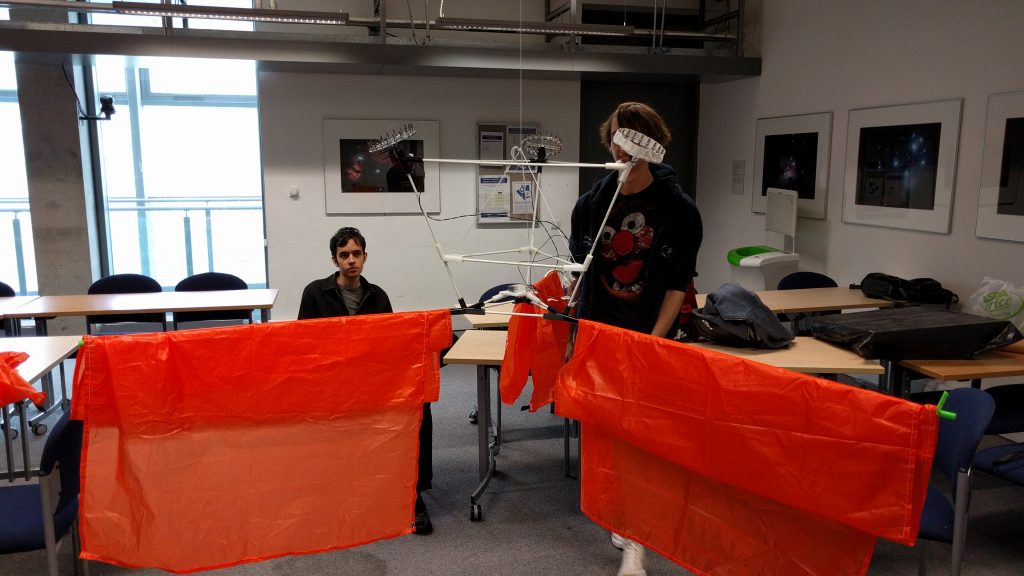Stabilised Platform
The stabilised platform is a project to take pretty pictures of space from above most of the atmosphere. It will be using a variety of stabilising features and a high quality camera to produce the best possible results.

We are a team of students from University of Southampton Spaceflight Society (SUSF), working on a project to take photos of space from high altitudes. We’ll send a camera up on a weather balloon to around 100,000 feet (35km) where we can get pictures of the Milky Way galaxy, far better than can be achieved from the ground. We’ve designed and built a platform which uses spinning disks to stabilise the camera, allowing us to take long exposure photos with no image blur. This project ties in with SUSF’s outreach activities at local schools, getting kids interested in space, science and engineering from an early age.
To make this exciting mission a reality, we need to raised £4620 to build the platform, buy a suitable camera and cover balloon launch costs. This is an extremely unique project, capturing images comparable to those taken by astronauts on the ISS while also being one of the first balloon launches at night in the UK. We are also able to include a GoPro camera for more unique videos such as directly downwards showing the night time lights of England moving below the platform. We may also do additional launches aimed at capturing different photos, such as the Moon or Sun rising over the Earth’s horizon.
The camera (a Sony a7s II) and lens make up a major proportion of the cost of this project. However, this model has extremely good low light performance (excellent for capturing the Milky Way) as well as 5-axis optical image stabilisation (reducing blur in the final image) making it the perfect choice for this project and will provide the best images from any commercially available option. Alongside this, as a mirrorless camera, it has a much lower weight compared to other options, actually reducing our launch costs and making it easier to point.
